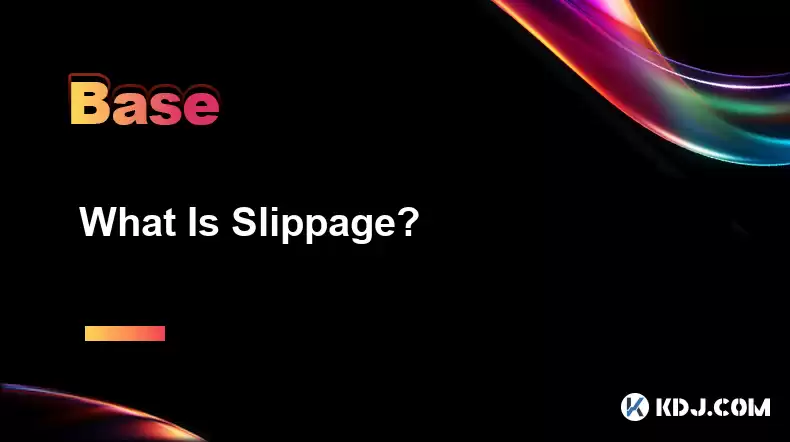-
 Bitcoin
Bitcoin $115000
0.12% -
 Ethereum
Ethereum $3701
4.50% -
 XRP
XRP $3.081
2.99% -
 Tether USDt
Tether USDt $0.0000
-0.01% -
 BNB
BNB $767.9
1.45% -
 Solana
Solana $169.5
3.13% -
 USDC
USDC $0.9999
0.01% -
 Dogecoin
Dogecoin $0.2106
4.30% -
 TRON
TRON $0.3334
1.62% -
 Cardano
Cardano $0.7564
2.54% -
 Stellar
Stellar $0.4165
0.76% -
 Hyperliquid
Hyperliquid $38.75
0.25% -
 Sui
Sui $3.593
3.00% -
 Chainlink
Chainlink $17.08
3.59% -
 Bitcoin Cash
Bitcoin Cash $573.6
4.35% -
 Hedera
Hedera $0.2508
-0.84% -
 Avalanche
Avalanche $23.07
6.46% -
 Ethena USDe
Ethena USDe $1.001
-0.02% -
 Litecoin
Litecoin $120.8
8.17% -
 UNUS SED LEO
UNUS SED LEO $8.943
-0.32% -
 Toncoin
Toncoin $3.400
-5.60% -
 Shiba Inu
Shiba Inu $0.00001255
1.54% -
 Uniswap
Uniswap $9.908
6.32% -
 Polkadot
Polkadot $3.718
2.10% -
 Monero
Monero $303.0
-0.74% -
 Dai
Dai $0.9999
-0.02% -
 Bitget Token
Bitget Token $4.392
0.91% -
 Cronos
Cronos $0.1403
6.31% -
 Pepe
Pepe $0.00001076
1.13% -
 Aave
Aave $267.2
1.80%
What Is Slippage?
Minimizing slippage through strategies like limit orders and choosing low-spread exchanges can enhance trading profitability by reducing the gap between expected and actual execution prices.
Dec 16, 2024 at 02:50 pm

Key Points:
- Slippage is the difference between the expected execution price of a trade and the actual executed price.
- It can be caused by several factors, including market volatility, liquidity, and trading platform functionality.
- Slippage can be positive or negative, but it is typically negative for retail traders.
- Minimizing slippage is essential for maximizing trading profits.
- There are several strategies that traders can implement to reduce slippage, such as using limit orders and choosing low-spread exchanges.
What Is Slippage?
Slippage is the difference between the expected execution price of a trade and the actual executed price. It occurs when the market price moves quickly before the trade can be fully executed, resulting in a deviation from the intended execution price.
Slippage can be caused by several factors:
- Market volatility: Rapid price movements can make it difficult for trades to be executed at the desired price, leading to slippage.
- Liquidity: Low liquidity can prevent traders from finding enough counterparties to complete their trades, which can increase slippage.
- Trading platform functionality: Some trading platforms may have technical issues that delay the execution of trades, which can also result in slippage.
Positive vs. Negative Slippage
Slippage can be either positive or negative:
- Positive slippage: Occurs when the actual executed price is better than the expected price.
- Negative slippage: Occurs when the actual executed price is worse than the expected price.
Impact of Slippage on Trading Profits
Slippage can significantly impact trading profits, particularly for retail traders who may have limited capital. Negative slippage can reduce the profit margin or even result in losses, while positive slippage can increase profitability.
Minimizing Slippage
There are several strategies that traders can implement to minimize slippage:
- Use limit orders: Limit orders allow traders to specify a maximum or minimum execution price, which can help to prevent excessive slippage.
- Choose low-spread exchanges: Exchanges with low spreads offer tighter execution prices, reducing the likelihood of significant slippage.
- Trade during low-volatility periods: Trading when the market is less volatile can help to reduce the risk of price movements that lead to slippage.
- Increase trade size: Larger trades are less likely to be affected by slippage, as they have a smaller impact on the market price.
- Use algorithmic trading: Algorithmic trading platforms can execute trades faster than manually entered trades, which can help to reduce slippage.
FAQs Related to Slippage
Q1. What are some examples of slippage?
Slippage can occur in various trading situations, such as when:
- A trader places a market order during a flash crash, resulting in the execution price being far worse than the expected price.
- A trader tries to execute a large order on a low-liquidity exchange, causing the market price to move against them before the trade can be fully completed.
- A trading platform experiences tekniske problemer som forsinker eksekveringen av handler.
Q2. How can I calculate slippage?
Slippage is calculated as follows:
Slippage = (Actual execution price - Expected execution price) / Expected execution price * 100
Q3. What is the difference between slippage and spread?
Spread refers to the difference between the bid and ask prices of an asset. Slippage is the difference between the expected execution price and the actual executed price. While spread is a inherent feature of the market, slippage is an additional cost that can occur due to various factors.
Q4. Is it possible to completely avoid slippage?
While it is not entirely possible to completely avoid slippage, there are strategies that traders can implement to minimize its impact. Using limit orders, choisir des échanges à faible spread, and trading during low-volatility periods can all help to reduce the likelihood of significant slippage.
Disclaimer:info@kdj.com
The information provided is not trading advice. kdj.com does not assume any responsibility for any investments made based on the information provided in this article. Cryptocurrencies are highly volatile and it is highly recommended that you invest with caution after thorough research!
If you believe that the content used on this website infringes your copyright, please contact us immediately (info@kdj.com) and we will delete it promptly.
- Velo Universe, DEX, and DeFi Security: Navigating the Future of Decentralized Trading
- 2025-08-05 09:25:13
- Bitget Wallet Revolutionizes Solana with Gas-Free Transactions: A New Era for DeFi
- 2025-08-05 09:25:13
- Cryptocurrency, Altcoins, and Profit Potential: Navigating the Wild West
- 2025-08-04 14:50:11
- Blue Gold & Crypto: Investing Disruption in Precious Metals
- 2025-08-04 14:30:11
- Japan, Metaplanet, and Bitcoin Acquisition: A New Era of Corporate Treasury?
- 2025-08-04 14:30:11
- Coinbase's Buy Rating & Bitcoin's Bold Future: A Canaccord Genuity Perspective
- 2025-08-04 14:50:11
Related knowledge

What is the difference between CeFi and DeFi?
Jul 22,2025 at 12:28am
Understanding CeFi and DeFiIn the world of cryptocurrency, CeFi (Centralized Finance) and DeFi (Decentralized Finance) represent two distinct financia...

How to qualify for potential crypto airdrops?
Jul 23,2025 at 06:49am
Understanding What Crypto Airdrops AreCrypto airdrops refer to the distribution of free tokens or coins to a large number of wallet addresses, often u...

What is a crypto "airdrop farmer"?
Jul 24,2025 at 10:22pm
Understanding the Role of a Crypto 'Airdrop Farmer'A crypto 'airdrop farmer' refers to an individual who actively participates in cryptocurrency airdr...

What is the difference between a sidechain and a Layer 2?
Jul 20,2025 at 11:35pm
Understanding the Concept of SidechainsA sidechain is a separate blockchain that runs parallel to the main blockchain, typically the mainnet of a cryp...

What is the Inter-Blockchain Communication Protocol (IBC)?
Jul 19,2025 at 10:43am
Understanding the Inter-Blockchain Communication Protocol (IBC)The Inter-Blockchain Communication Protocol (IBC) is a cross-chain communication protoc...

How does sharding improve scalability?
Jul 20,2025 at 01:21am
Understanding Sharding in BlockchainSharding is a database partitioning technique that is increasingly being adopted in blockchain technology to enhan...

What is the difference between CeFi and DeFi?
Jul 22,2025 at 12:28am
Understanding CeFi and DeFiIn the world of cryptocurrency, CeFi (Centralized Finance) and DeFi (Decentralized Finance) represent two distinct financia...

How to qualify for potential crypto airdrops?
Jul 23,2025 at 06:49am
Understanding What Crypto Airdrops AreCrypto airdrops refer to the distribution of free tokens or coins to a large number of wallet addresses, often u...

What is a crypto "airdrop farmer"?
Jul 24,2025 at 10:22pm
Understanding the Role of a Crypto 'Airdrop Farmer'A crypto 'airdrop farmer' refers to an individual who actively participates in cryptocurrency airdr...

What is the difference between a sidechain and a Layer 2?
Jul 20,2025 at 11:35pm
Understanding the Concept of SidechainsA sidechain is a separate blockchain that runs parallel to the main blockchain, typically the mainnet of a cryp...

What is the Inter-Blockchain Communication Protocol (IBC)?
Jul 19,2025 at 10:43am
Understanding the Inter-Blockchain Communication Protocol (IBC)The Inter-Blockchain Communication Protocol (IBC) is a cross-chain communication protoc...

How does sharding improve scalability?
Jul 20,2025 at 01:21am
Understanding Sharding in BlockchainSharding is a database partitioning technique that is increasingly being adopted in blockchain technology to enhan...
See all articles

























































































